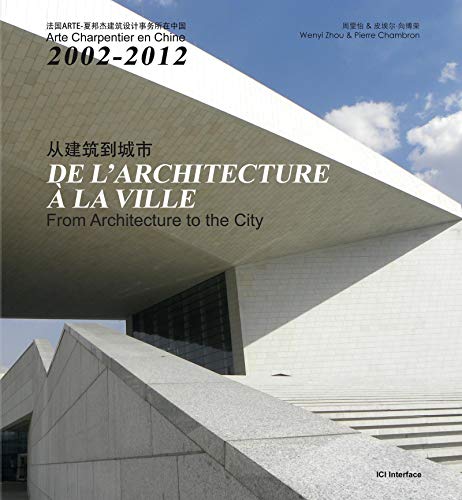wenyi zhou pierre chambron (2 Ergebnisse)
FeedbackSuchfilter
Produktart
- Alle Product Types
- Bücher (2)
- Magazine & Zeitschriften (Keine weiteren Ergebnisse entsprechen dieser Verfeinerung)
- Comics (Keine weiteren Ergebnisse entsprechen dieser Verfeinerung)
- Noten (Keine weiteren Ergebnisse entsprechen dieser Verfeinerung)
- Kunst, Grafik & Poster (Keine weiteren Ergebnisse entsprechen dieser Verfeinerung)
- Fotografien (Keine weiteren Ergebnisse entsprechen dieser Verfeinerung)
- Karten (Keine weiteren Ergebnisse entsprechen dieser Verfeinerung)
- Manuskripte & Papierantiquitäten (Keine weiteren Ergebnisse entsprechen dieser Verfeinerung)
Zustand
- Alle
- Neu (Keine weiteren Ergebnisse entsprechen dieser Verfeinerung)
- Antiquarisch (2)
Einband
- alle Einbände
- Hardcover (2)
- Softcover (Keine weiteren Ergebnisse entsprechen dieser Verfeinerung)
Weitere Eigenschaften
- Erstausgabe (Keine weiteren Ergebnisse entsprechen dieser Verfeinerung)
- Signiert (Keine weiteren Ergebnisse entsprechen dieser Verfeinerung)
- Schutzumschlag (1)
- Angebotsfoto (1)
Gratisversand
- Kostenloser Versand nach Deutschland (Keine weiteren Ergebnisse entsprechen dieser Verfeinerung)
Verkäuferbewertung
-
De l'architecture à la ville - Arte Charpentier en Chine 2002 - 2012. From Architecture to the City.
Verlag: ICI Consultants, 2012
ISBN 10: 291697721X ISBN 13: 9782916977218
Anbieter: Ammareal, Morangis, Frankreich
Hardcover. Zustand: Très bon. Edition 2012. Ammareal reverse jusqu'à 15% du prix net de cet article à des organisations caritatives. ENGLISH DESCRIPTION Book Condition: Used, Very good. Edition 2012. Ammareal gives back up to 15% of this item's net price to charity organizations.
-
De l'architecture a la ville. From Architecture to the City. Arte Charpentier en Chine 2002-2012.
Verlag: Design Media Publ., 2012
ISBN 10: 9881566150 ISBN 13: 9789881566157
Anbieter: Fundus-Online GbR Borkert Schwarz Zerfaß, Berlin, Deutschland
Zustand: Sehr gut. 243 S.; zahlr. Illustr.; 27 cm. Sehr gutes Ex. - Französisch u. englisch. // INHALT : Projets urbains - grandes compositions et morphologies urbaines --- Urban Designs - Large Scale Compositions and Urban Morphologies --- Équipements publics - symboles urbains et espaces majeurs --- Public Facilîties- Urban Symbols and Major Spaces --- Renouvellements urbains - protections et réhabilitations --- Urban Renovation - Protection and Réhabilitation --- Complexes bureaux et commerces - entre forme et fonction --- Office and Business Complexes - Between Form and Function // (u.a.) - . During the construction phase in 1995-97, we also built the University of Real Estate Training in Shanghai, our first compieted building, thus inaugurating a long series of projects in the city. Shanghai quickly became the reference model that other metropolitan areas wanted to imitate, and in 1996, we participated in the consultation for another opera in Nanjing. Concurrently with projects in the existing urban fabric of old Shanghai's, appeared the need to develop new experimental towns and quarters in anticipation of the approaching third millennium. In 1997-1998, the Shanghai municipal government launched an international competition to design the Wanli quarter, which was located just outside the city to the north-west at that time. It was to house some 200,000 residents and was also to be an experimental neighborhood from an environmental point of view. We won this competition by structuring the parts around a strong green spine of parks, and by organizing the housing blocks around central courtyard gardens, reinterpreting the space between the houses and the courtyards on the scale of the urban block. This project was honored with the gold medal for urbanism. Using the same logic of structuring cities around environmental goals which incorporate greenways and "blue" or waterways, we developed the new town project for Nanhui in 1999-2000 in Pudong, and then another in Gaoqiao at the mouth of the Huangpu and Yangtze Rivers. It was in these years, at the end of the 1990's, that the need arose to rethink the whole metropolitan system of open spaces. This was also a new step for Chinese urbanism, because a public square open to all was rare in the old cities. In Pudong, we had the opportunity to participate in the beginning of the process of elaborating a series of major, large public spaces. First the construction of Century Plaza which was to accommodate the entrance to the underground metro and retail. The square was surrounded by the seat of the regional administration, already under construction, and the proposed Science Museum site, and provided access to both a large park and to what was to become Century Avenue. An immense 200 meter square space, it is edged with terraces that define its boundaries. While this square was being built, the question came up of the connection between this governmental and cultural quarter and Lujiazui, the business quarter 5 kilometers away along the Huangpu River. It was at this point that we won the commission by proposing Century Avenue (1998-2001) all of one piece, identical from one end to the other for its five kilometers and 100 meters wide. This avenue is designed like an urban boulevard from the ground level, with the intersecting streets defining plazas, rather than like a highway on several levels. The avenue was conceived with its urbanity and the comfort and pleasure of pedestrians in mind and is enhanced with large gardens, open or closed, along its length. At the same time, in 1999, the municipal government asked us to transform the central part of Nanjing Road, where the big department stores are located, into a pedestrian street. This was to be the first example which served as a model elsewhere in large Chinese cities. The decade of the 1990's saw us mainly invested in Shanghai. But since then, all the Chinese cities have seen considerable development and gradually we became involved further away:



